HISTORY
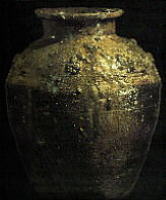
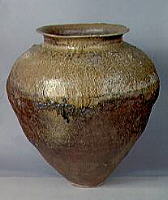
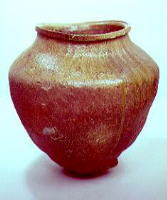
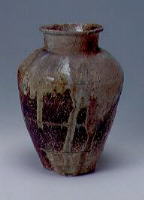
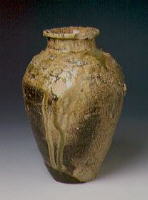
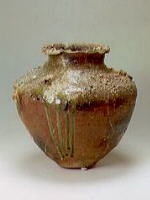
The prosperity of Tokoname stems from its port from which
its pottery products have been transported to every corner
of Japan.Tokoname has a pottery heritage dating back to
about 1100 AD.In Japan there are six ancient areas of
pottery-Tokoname,Seto,Echizen,Shigaraki,Tanba,and Bizen.
Of these, Tokoname has proven to be the oldest and largest
in terms of its scale of kilns.Up to the Edo period
Tokoname played an important role as one of the leading
kiln sites rized by a powerful sense of form. And the end
of the Edo period the production of red earthenware
teapots are sold throughout Japan. Thus, it can safely be
said that the history of Tokoname rests on the potter's
clay.
The History of Tokoname
Quoted from the information of Tokoname City Folk Museum
Tokoname City is located in the hills on the west coast of Chita Penninsula
which faces lse Bay. It is a long and narrow town running 6 kilometers East
to West, and 15 kilometers North to South.
The name "Tokoname" first appeared in "Oharidano mashimizu" (an old document)
as "Tokoname go Tsutsumida sho, Chita-Gun, Owari-Kuni" on May 13, the 4th
year of Oei (1397).
The city was called Tokonabe a long time ago, but is now called Tokoname.
It is not exaggerating to say that the history of Tokoname is the history
of Ceramics. Medieval Tokoname pottery, which began about 900 years ago,
mainly produced miscellaneous vessels like large earthen pots and cups that
were used for everyday purposes.
The tradition has been passed on to the present in some of the leading
products of Tokoname ceramics like the eathenware pipes, and red clay pottery,
Tiles, Bricks and sanitary ceramics after. And new fields are likely to be
developed by ceramic artists.
Quoted from the information of Tokoname Ceramic Recerch Institute
The beginnings of the Tokoname kilns are believed to date from about
1,100 A.D., and are probably the oldest kilns in the history of Japanese
ceramics. An estimated 3,00O kilns existed in large scale through the Heian
and Kamakura periods (794-1333) and their remains have been discovered in
various places, from Hiroshima prefecture, east and northwards to Aomori
prefecture, recalling their once glorious days. Sherds found at these places
are mostly from vessels for Shinto or Buddhist altar rituals including the
pieces used at graves and sutra-mounds. The early Tokoname ware is a coarse,
greyish clay, burnt dark brown all over. It is rough in appearance,
untrammeled in concept, and stands out powerfully as a masculine sense of
form. Every old piece is partly covered with a green ash glaze which runs
in small rivulets down the side in three or four places. Since the products
from the early Tokoname kilns in the Heian, Kamakura and Muromachi
periods (794-1573) are mostly vases and jars, it was once thought that
production of early Tokoname ware was limited only to these two shapes.
However, Yama-Chawan (mountain tea bowl) were fired in great quantities
and sherds of the mountain tea bowl have been found at many kiln sites.
The style of the mountain tea bowl is coarse in appearance and its trumpet
mouth rim is not tapered but terminates in an abrupt 90o lip edge. The base
of the tea bowl, which was formed separately and later attached to the body,
shows places where chaff-remains stuck after firing. Besides the above pieces,
large flat bowls, dishes, roof tiles for Buddhist temples, lipped bowls,
cooking pots and other various utensils for daily use were produced and fired
in anagama kilns (tunneled sloping Kilns) located along the ridge of hill
running through the central Chita peninsula. These products of the Heian and
Kamakura periods (794-1333) are mostly fine pieces.
In the Muromachi period (1392-1573), pit kilns were replaced by surface kilns
at Tokoname village. Vases and jars which had clay containing iron oxide were
fired and burnt black all over, showing one of the characteristics of Tokoname
ware. Examples of these are found in the Tokai and Hokuriku Areas. During this
period, Mizuno Kenmotsu, better known as Lord Tokoname, cultivated the
friendship of such prominent men as Rikyu, Sokan, and Myokian Hoshuku to whom
he introduced many fine Tokoname vases of earlier periods. One of the most
famous pieces is a water jar once owned by Rikyu. It was named "Fushiki", and
has been handed down for generations in the Sen family. This Tokoname jar was
produced in the late Kamakura period and as the tea ceremony gained popularity
during the Edo period, water jars of the "Fushiki" type were made in large
quantities in Tokoname.
Watanabe Yahei, who was active during the Tenmei era (1781-1789), was given
by Lord Owari the title of "Tokoname Genkosai". He was the first potter who
singed his name to Totoname ware. There were many potters who produced utensils
for the tea ceremony in the middle of the Edo period, with Kamimura Hakuo being
one of the representative potters of this group. He was active during the Bunka
era (1804-1816) and associated with cultured men in Kyoto and Edo. He used two
names, either"To Hakushi"or"To Hakuo"in signing his work. About the same period,
Priest Seishu, who was the 8th generation of the Soshinji temple, had his own
kiln within the precinct and made low fired pottery. He instructed both Ina
Choza and Akai Tozen, who became prominent potters of Tokoname ware thereafter.
Tozen I was a special potter who made a pottery wind furnace for Lord Owari
and thus he was given the title of "Master of the Wind Furnace, Akai Tozen".
Tozen II was also an excellent potter as was Ina Choza II, who originated the
"Mogake" glaze. For this glaze, the bisquit ware is partially covered with
seaweed, then fired in the kiln, leaving red markings where the seaweed once was.
Many excellent potters, including Matsushita Sanko, have followed in the tradition
of the artists mentioned. Koie Hokyu and his son, Hoju, were the leading ceramists
at the end of the Edo period. At that time, Tokoname ware made remarkable progress
when viewed from the technical and artistic points of view. It was in this age
that the nobori-gama (sloping chambered kiln) was introduced at Tokoname village
while Sugie Jumon succeeded in producing small delicate pottery vessels for the
Chinese style green tea ceremony under the guidance of Hirano Chuji, a physician
of the time.
In the 11th year of Meiji (1878), a Chinese gentleman, Chin Shin Heng, visited
Tokoname village by chance. He taught Jumon the technique of the Chinese I-hsing
ware. Jumon became very famous for his copies of the I-hsing pot and they were
much appreciated by his contemporaries. In the 16th year of Meiji (1883), the
Research Institute of Art was established at Tokoname and after Naito Kakurei
and Terauchi Hangetsu took over thier positions at the institute, they reformed
the Tokoname ceramic industry. Naito Kakurei introduced a Western manner of
sculptural pottery into Tokoname ware. Tomimoto Baigetsu was one of the famous
artists in this group. In the 2nd year of Taisho (1913), Hirano Kasho made a
pottery figure of Koie Hoju, which stands 2.6 meters in height and shows great
influence from the above artists. This piece is considered as one of the
representative ceramic sculpture figures in Japan today. At the end of the Meiji
and Taisho periods, Tokoname ware played an active part in the Japanese ceramic
industry, giving rise to many artists, and among them, Inoue Yonan, being the
highest. He ranks first among the contemporary ceramic artists in Japan. After
World War II, the potters in Tokoname were producing mostly the I-hsing type ware.
The present day artists of Tokoname are divided into the Japan Traditional School,
the Japan Art Exhibition School, the Craftsman School and the Modern Art School
Production of sculptural pottery has flourished since the Meiji period and
continues to flourish today, so the Tokoname Sculptural Pottery Group has a
relatively large membership.
A SHORT HISTORY OF TOKONAME WARE 2
back to HOMEPAGE





